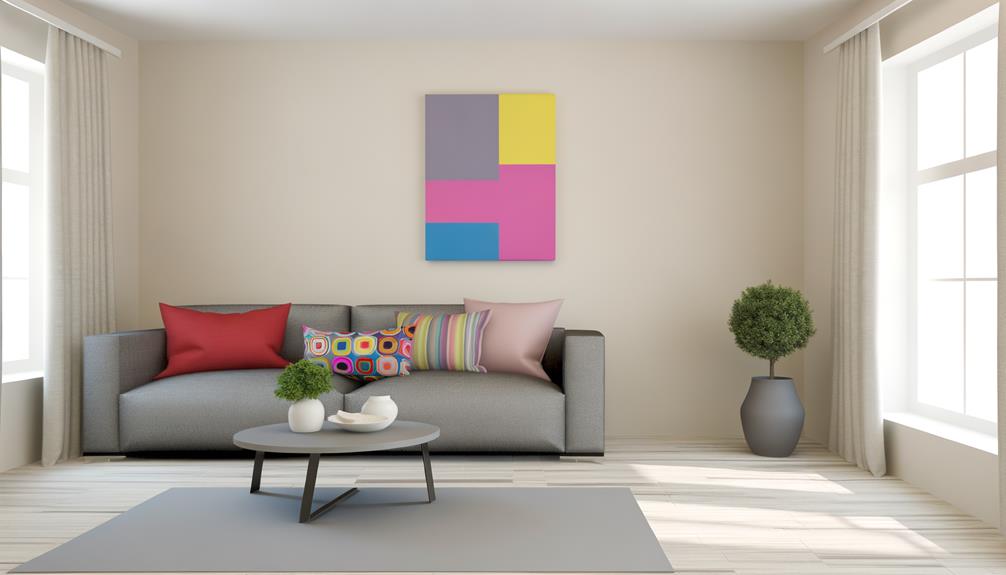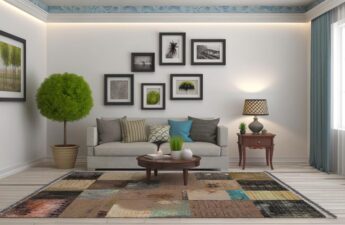Choosing the perfect color schemes for modern homes can be a daunting task. With so many options available, it can feel overwhelming to make a decision that will define the look and feel of your space. But fear not, because in this discussion, you will discover some expert tips and strategies to help you navigate through the sea of colors and find the perfect palette for your home.
From understanding the impact of lighting to exploring color psychology, we will delve into the world of color schemes and show you how to create a harmonious and inviting atmosphere that will make your modern home truly shine.
So, let's dive in and uncover the secrets to choosing the perfect colors for your space.
Consider the Mood and Atmosphere
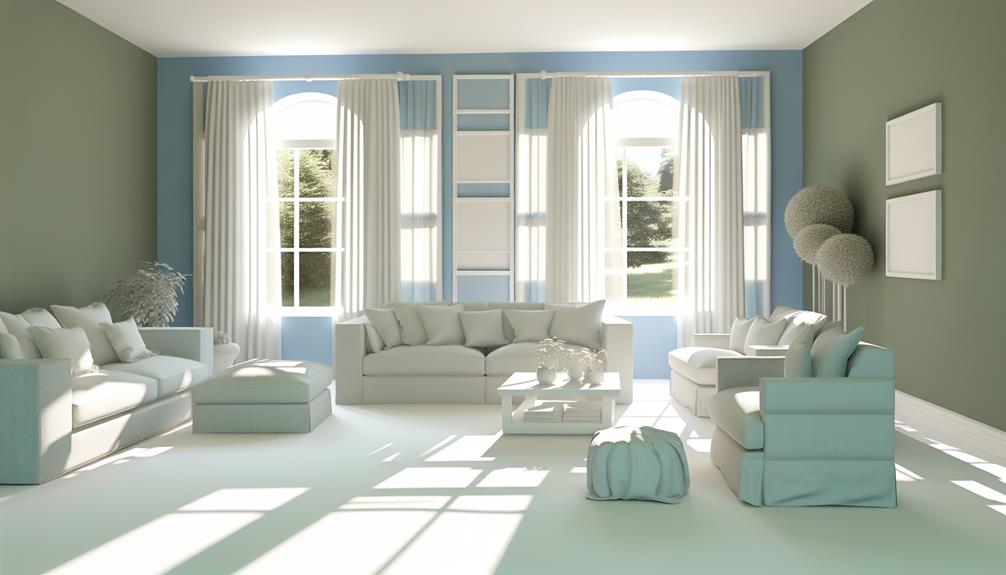
When considering the mood and atmosphere of your modern home, it's important to carefully select colors that will evoke the desired emotions and ambiance in each space. To begin, you should choose a color palette or color scheme that aligns with your personal style and the overall aesthetic you wish to achieve. Think about how you want each room to feel.
Do you want a calm and relaxing atmosphere? Or do you prefer a vibrant and energetic vibe? Once you have identified the desired mood, you can start exploring different paint colors.
Interior designers often recommend using neutral colors as the main colors in your color scheme. Neutral colors such as warm whites and soft grays serve as a versatile backdrop that can easily complement any accent colors you choose. They create a sense of balance and allow other elements in the room, such as furniture and decor, to shine.
When it comes to finding the right colors for your space, consider the natural lighting in each room. Rooms with ample natural light can handle cooler colors like blues and greens, while rooms with less natural light may benefit from warmer colors like yellows and oranges. Experiment with different combinations of colors to evoke specific emotions and create the desired ambiance.
Explore Color Families
To further enhance the mood and atmosphere of your modern home, it's important to explore different color families that can bring depth and visual interest to each space. When choosing a color palette for your home, it's essential to consider the colors that work well together and can be used in every room.
One way to achieve this is by selecting a main neutral color that will serve as the foundation for your color scheme. This neutral can be a light gray, beige, or even white, depending on your personal preference. Once you have your main neutral, you can then choose three to five colors from different color families to add accents and create a cohesive look throughout your home.
An interior designer can help you in choosing the right paint colors and creating color schemes that suit your style and preferences. They can guide you in selecting colors that not only complement each other but also create the desired mood and atmosphere in each room.
Take Lighting Into Account
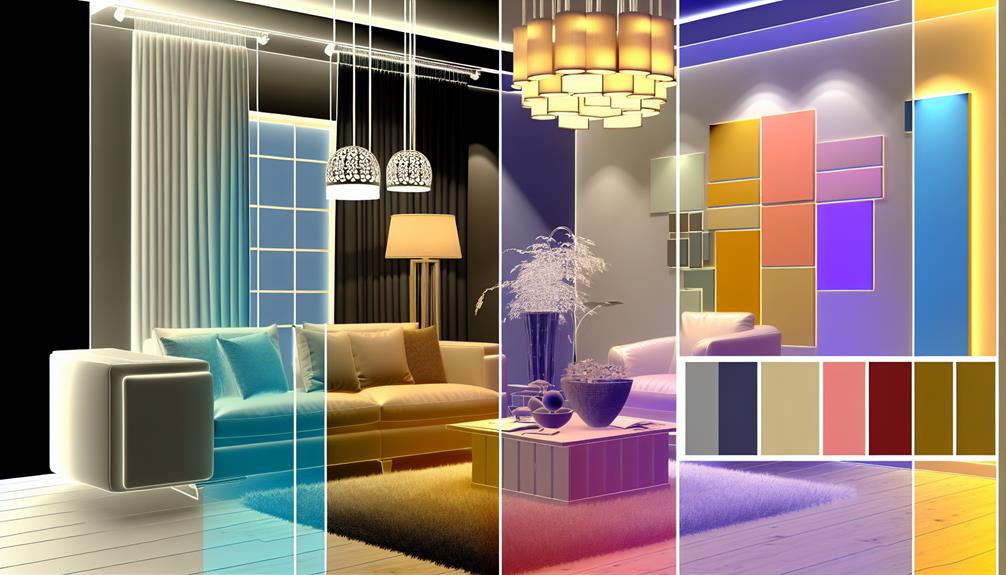
Consider how lighting can affect the appearance of colors when choosing a color scheme for your modern home. Choosing a color palette for your home involves more than simply picking colors that you find visually appealing. You must also take into account how those colors will look in different lighting situations. Lighting can greatly impact the way colors are perceived, so it's important to choose colors that work well together without overwhelming the space.
One of the first tips and tricks to keep in mind is to take note of the natural light in each room. Natural light can vary throughout the day, so observe how it affects the colors in the space. Additionally, consider the type and intensity of overhead lighting in each room. Different bulbs can cast different colors, which can alter the appearance of your chosen color palette.
To find the right color palette, test different colors in the actual space you're decorating. Paint swatches on the walls and observe how they look in both natural and artificial lighting. This will give you a better idea of how the colors will appear in your home.
Test Swatches for Accuracy
Use paint swatches to simplify the process of choosing colors for your modern home.
When it comes to selecting the perfect color palette for your room, paint samples are invaluable tools that can help you find the right shade with accuracy. Design experts recommend that you take the time to work with paint swatches before making a final decision.
Start by collecting a variety of paint swatches in different colors that you're considering for your room. Then, tape the swatches to the walls and live with them for 24 to 48 hours. This will allow you to observe how the color looks throughout the day, as lighting can greatly impact how a color appears. Take note of your feelings towards the color during this test period.
After the test period, assess the swatch results and adjust your color selection accordingly. If a color doesn't evoke the desired mood or doesn't work well with your furnishings, it's time to reconsider.
Aim for Cohesion and Balance
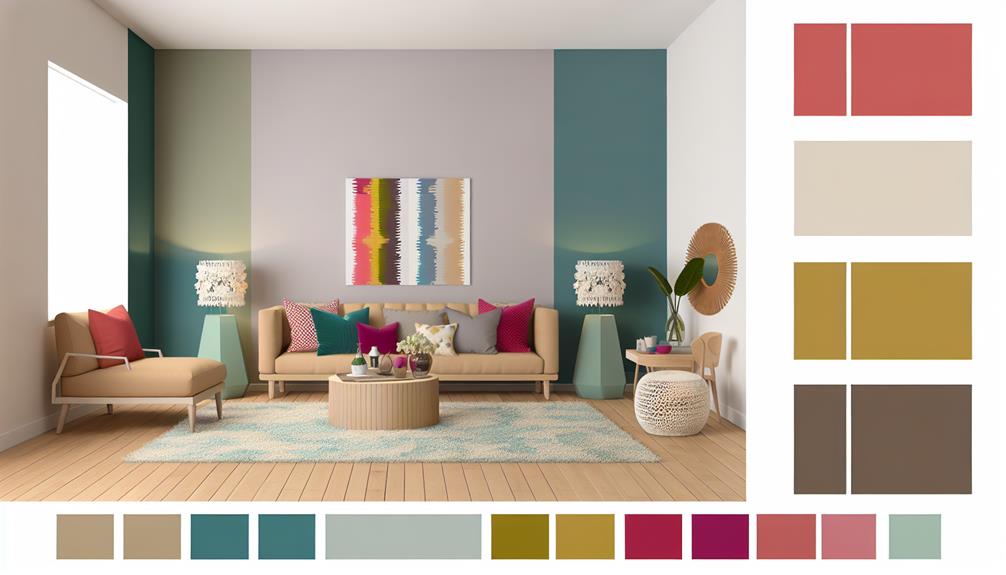
After testing the paint swatches for accuracy, it's time to focus on achieving cohesion and balance in your color scheme for your modern home. To make your home feel cohesive, it's important to choose colors that work well together and create a harmonious palette throughout your space. One helpful tool in choosing paint colors is the color wheel. By understanding the color wheel, you can select colors that are complementary or analogous, creating a sense of balance in your rooms.
When choosing your color palette, consider following the 60-30-10 rule. This means that 60% of the room should be a dominant color, 30% should be a secondary color, and 10% should be an accent shade. This distribution helps to create a visually pleasing composition and maintain overall harmony.
To maintain cohesion, it's important to repeat colors from room to room. This doesn't mean that every room needs to be the exact same color, but rather that there should be a thread that ties the rooms together. Benjamin Moore, a reputable paint brand, offers color collections that are designed to work well together, making it easier to create a cohesive palette for your home.
Consider your design style and the architectural features of your home when choosing colors. Certain colors may enhance the features of your home, while others may clash. Strike a balance between bold and subtle colors to ensure that your color scheme is visually appealing and complements your design style.
Lastly, consider incorporating an accent wall into your color scheme. This can add visual interest and create a focal point in a room. Choose a color that complements the rest of your palette while also making a statement.
